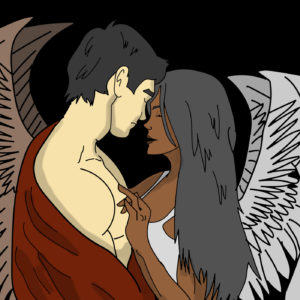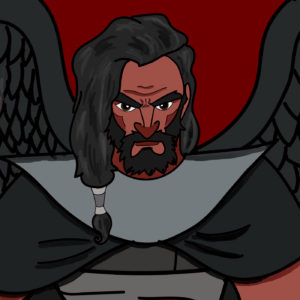Harpy (hahr-pee)
Though harpies shared obvious similarities to average humans, they did not consider themselves men. An average harpy’s body was built like a man with feathers starting from the neck down, great big wings allowed them to achieve flight, and feet ended in talons. They thought of themselves above matters of “land dwellers” and spent considerable amounts of time in the air, on floating islands, or high in the mountains. Mostly keeping to themselves throughout history, the spread of writing, astronomy, and geography was attributed to them. Harpies were the first group of people to start mapping Fabella. Thanks to their work, all people had a clear idea of what the whole world looked like fairly early on in history.
Culture
The survival of a distinct harpic civilization was attributed to the harpies gift of flight. At the end of the Technology Age, the were approximately 6–7 million harpies and their descendants worldwide, with a majority of them living in their native floating island of Asda and the surrounding mountainsides in countries. The International Population Register Center maintained information on the birthplace, citizenship and mother tongue of harpic people living in Fabella, but did not specifically categorize any by ethnicity.
Religion
The traditional religion for harpies was “Ispatian” —a philosophical and religious system of personal values and the relationship of an individual to others, to the world around them, and to the Higher Mind. In essence, it represented monotheism with a much-defined system of worshipping Lord Lukis —the Mighty One.
Literature
The earliest extant work in harpic literature was the Pharagra, a collection of mystic songs. Harpic literature was one of the most religious enriched bodies of literature in Fabella.
Music
Chorus music and accapella began with harpy culture. They trained their voices to sing with a group and were the first to split voices into the categories of alto, bass, soprano etc. Typical harpy music had slow melodies with small string or piano accompaniment.
Art
Harpic architecture reflected influences of bordering nations. Large squares were named after cultural heroes, well-groomed parks, and pedestrian-only zones, were features of these orderly towns and cities on mountain tops and floating islands. Harpies bullied people into conforming to their attitudes towards art and city planning which was why a lot of cities is Fabella looked the same and the grid method of traffic was adopted.


